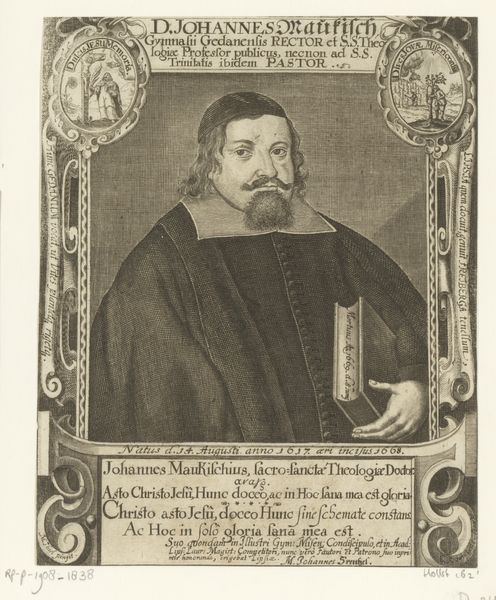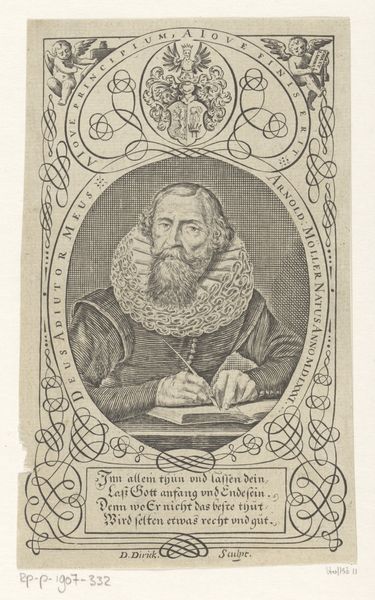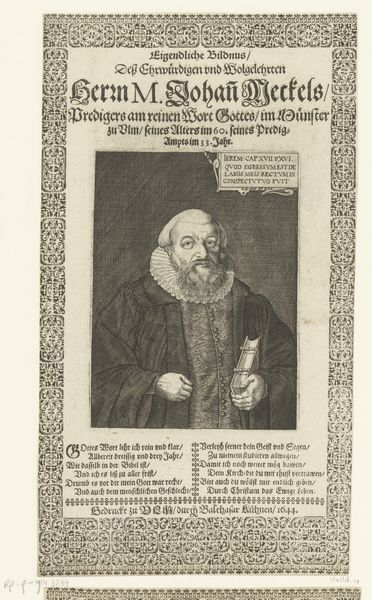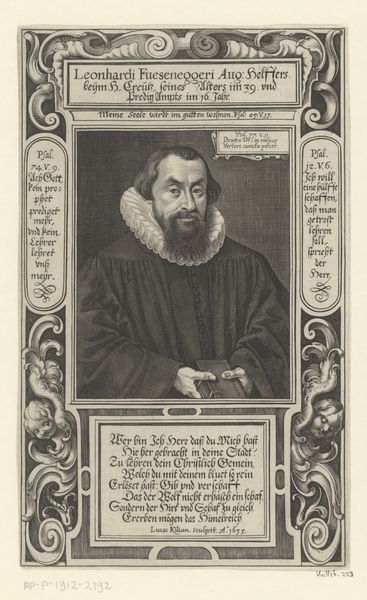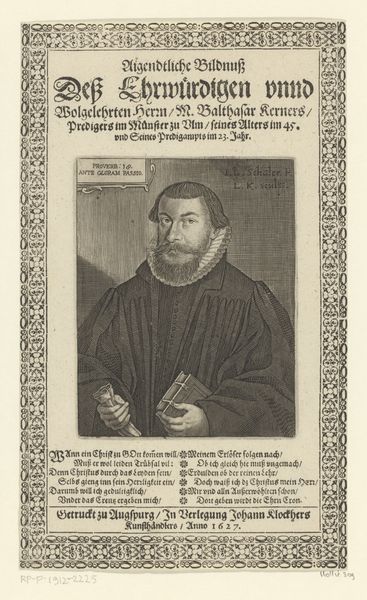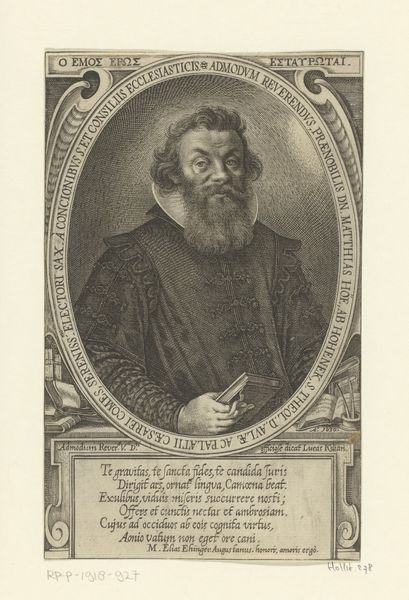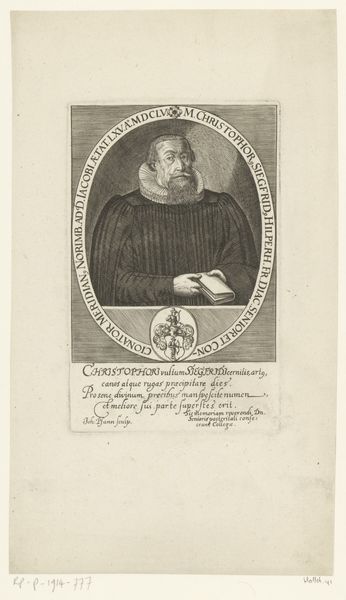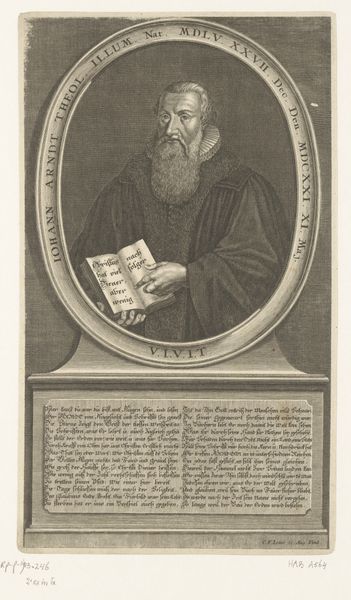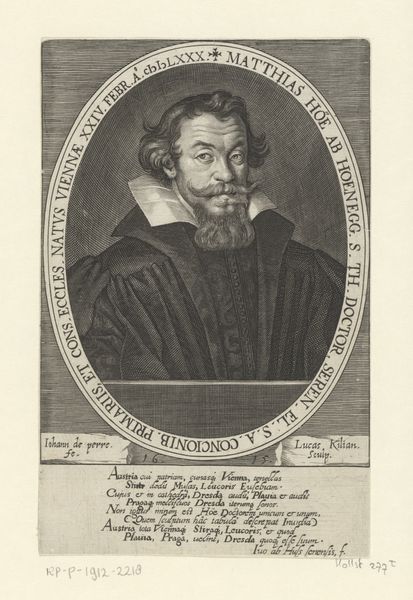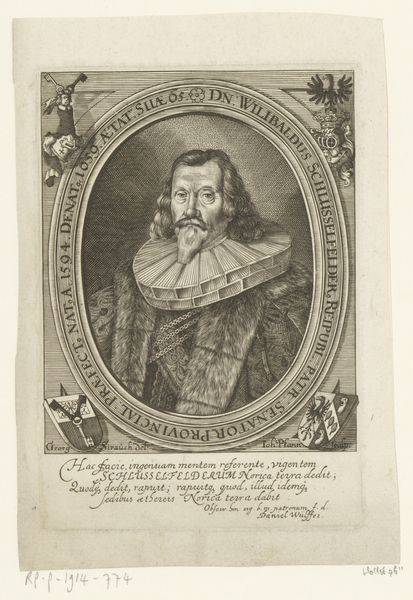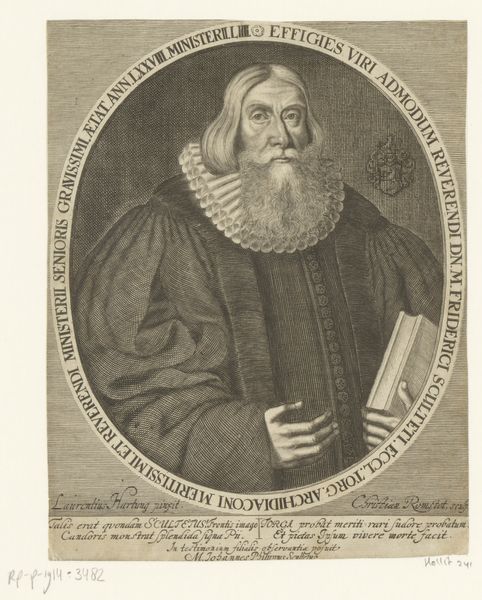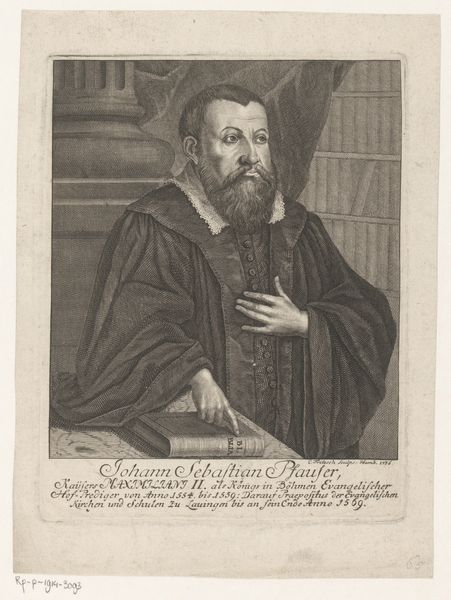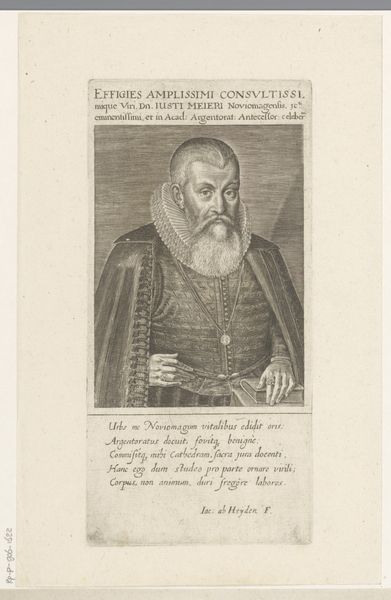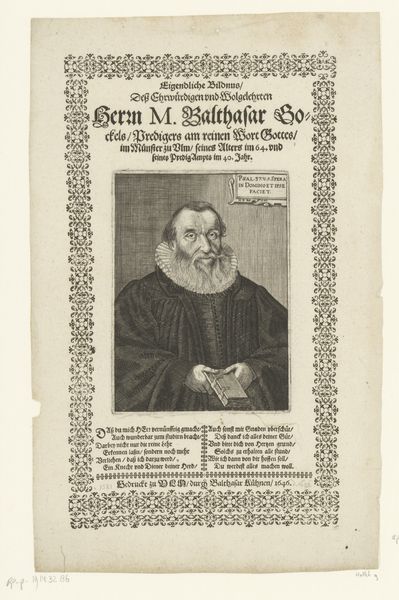
drawing, print, paper, ink, engraving
#
drawing
#
baroque
# print
#
old engraving style
#
traditional media
#
paper
#
ink
#
northern-renaissance
#
engraving
Dimensions: height 130 mm, width 105 mm, height 275 mm, width 145 mm
Copyright: Rijks Museum: Open Domain
Curator: Looking at this, my immediate impression is of stillness, and solemnity. The sharp, precise lines create a world devoid of softness. Editor: Indeed. We are looking at "Portret van Christoph Nieschl," a print created in 1619 by Lucas Kilian. It’s currently held in the Rijksmuseum. Made using engraving on paper and ink, the work exemplifies Baroque aesthetics filtered through a Northern Renaissance lens. Curator: It’s hard to separate this image from the historical context, given how explicitly it presents itself. Here is a man, likely affluent, captured alongside biblical text, holding a small book with the Latin word “precious”, and what looks like a small crucifix balanced on top. Editor: Notice how the lines emphasize form above all else? The stark contrast gives a strong sense of the subject’s presence. Kilian expertly utilizes line variation to differentiate textures—the fine lines on the face compared to the heavier strokes of the clothing, creating depth and dimensionality. Curator: The work evokes strong questions for me about the sitter, his relation to the community. Who had the power to be immortalized in such a manner? How might theological divides and power structures have impacted the creation and distribution of such portraits? And of course, the relation between the religious content and political influence. Editor: I find it particularly engaging how Kilian’s technique mimics the detail of a painting while remaining firmly within the printmaking tradition. Curator: And I am left wondering how Christoph Nieschl and those like him perceived themselves within their societal context and what this image did for him to perpetuate such image. It’s a fascinating window into that specific intersection of faith, identity, and privilege in the early 17th century. Editor: It is certainly compelling to consider these interwoven questions as one carefully traces the sharp lines. It makes one want to pick up a magnifying glass and see what is truly on this page.
Comments
No comments
Be the first to comment and join the conversation on the ultimate creative platform.
